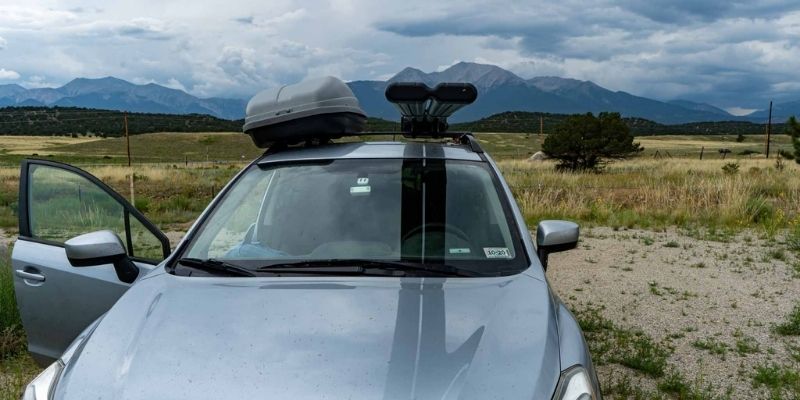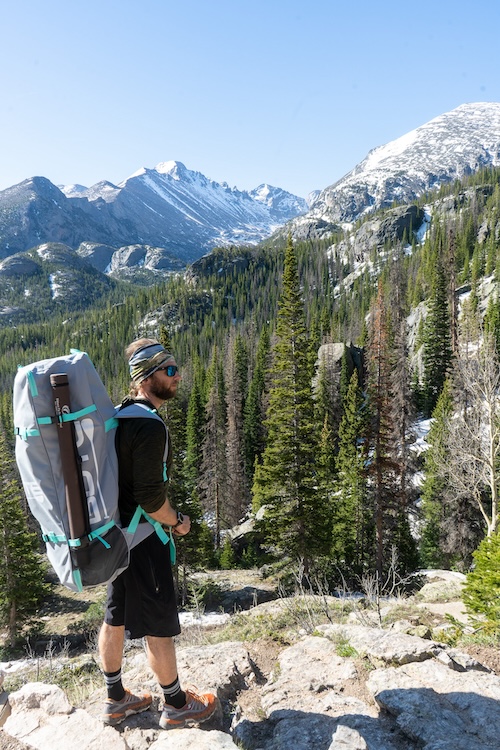Whatever the reason for transporting your fishing gear, the packing must be done carefully. This is rarely the fun part, but it should be done with precision in order to keep your precious, and often expensive, equipment safe. There is nothing worse than arriving on a much-anticipated fishing trip to find that your equipment is damaged!
There are various ways to transport your fishing gear, from driving, to flying, or shipping with a courier. Whatever the mode, you’re the one responsible for the packing, so it pays to get this right from the offset. Our guide to fishing gear transportation will ensure that you pack up your equipment to the best of your ability, mitigating risks so that your trip goes without hitches.
Note: This article was co-written by Jessica Hanson (bio below), and Max DesMarais.
Packing up your rods and reels
The fact is that fishing rods are incredibly long, so they’re never going to be the easiest thing to travel with. They also have a lot of parts that are easy to break, and expensive to replace. Packing them carefully is essential, so the question is… which method works best?
The method you choose is dependent on how much time and money you want to spend. If you don’t have much time, you are probably better off investing in a case that has been specifically designed for rod transportation.
If you are traveling at all, whether backpacking, flying, or storing in your car, you should have a rod tube. They are inexpensive, but work extremely well for preventing any damage.
Buy a fishing rod case
Check out Amazon.com, as they offer a range of fishing rod cases designed exactly for the job of transportation. It often doesn’t make sense to buy the cheapest on the market, given that you’ve probably invested a lot in your rods beforehand. A good case will prevent scratches, dents and breaks, as it will be padded inside. You’re probably looking at a spend of between $20 and $200 per case, according to quality. We know that is a very wide range, but if you need a locking system, you’ll need to be on the higher end. If you are less concerned with theft, grabbing an inexpensive rod tube and a reel cover is the way to go.
If you opt for a cheap one, you’ll probably find that it’s made of fabric and fairly soft. If you’re transporting your rods by car, these should be sufficient, as you’ll have control over what happens to them.
However, if you’re entrusting your gear to and airline or courier, it makes more sense to invest in one of the hard shell cases that can withstand any knocks or drops. Most of these are approved by the airlines, so you shouldn’t have issues checking them in.
Hard shell cases are easy to pack, very safe, and can be found to fit just about any rod. They even make cases that allow anglers to leave the reel attached to the case.
One of our favorite brands recently who we spoke with at the AFFTA conference is Sea Run Cases. The cases are incredibly well designed, durable, and beautiful. The only downside is that they are on the more expensive side. At Hiking & Fishing, we honestly tend to leverage simple hard rod tubs for the rods, and soft cases that we pack in between clothes for our reels.
Make your own fishing rod cases
If money is tight or you like a DIY challenge, you can make your own rod cases without too much effort, and with minimal expense. All you’ll need is a length of heavy-duty cardboard tubing (or a PVC pipe), some bubble wrap, packing paper and tape. You will also need a hacksaw to cut the tubing or pipe to the correct size.
Make sure that you have some end caps for the tube or pipe, as you won’t want the rods to slip out. Most fishing or tackle shops will have some kind of tubes left over from deliveries, and will probably be happy to let you take it. Alternatively, you can check with carpet shops, which may be able to offer you some inner carpet tubes. With these, you may be able to fit more than one rod inside.
This is a low cost and environmentally friendly way to transport your gear safely.
Packing the rods in your DIY tubes
Be sure to wrap each individual rod carefully in bubble wrap and tape it up. If you’re putting more than one rod in a tube, make sure the rods are of equal length and place one facing up, while the other faces down. This will help them to fit more closely together in the tube. Once all rods are wrapped, secure them together using packing tape.
Give the tube a shake to make sure your rods aren’t moving around inside. You can put something soft in at both ends if there is extra space, and when that’s done, secure the end caps with packing tape too. If you’re using an airline or courier, remember to write your details on each tube, as well as details of the contents.
Hooks, lures and flies
As for your hooks, lures and flies, these are sharp items and won’t make it through airport security, therefore, they need to be in checked baggage. You should check the restricted items list for the country you’re landing in to make sure these items are allowed. It is always a good idea to wrap each item individually if trusting the items to an airline or courier. If you’re traveling in your car, this isn’t really an issue.
Simply put, you likely should have a bag that has all of your gear. Any suitcase will do here, but you should check out these fishing travel bag options. We generally just wrap our fly box, reels, and other miscellaneous items inside clothing as cusioning.
Transporting your rods by car

Max’s car with the River Quiver from Riversmith
Our favorite method of transporting rods via car is by a rooftop rod holder.
If done carefully, you may not even need to pack your rods into tubes to travel by car. You can lay them from the trunk of your car to go between the front seats and sit on the dash. However, to prevent any mishaps, it is sensible to make the effort. Either way, the tips will need some kind of protection from knocks when the car goes over bumps in the road. You can even buy fishing rod holders for made-up rods if you’re planning to transport them yourself.
If you’re not planning to use tubes or cases, these are the minimal precautions you should take: before loading the car, you can bunch your rods together, all facing the same way up (tips upwards, butts downwards). Use loop straps or bungee cords to secure them together, then place a sock over the tips.
Dependent on the size of your car, you can place the rod bundle in the footwell of the passenger seat, with the butts on the floor and the tips passing through the seats in a diagonal direction toward the trunk. You can use another bungee cord to secure them in position. You may need to drop your back seat if the car is on the smaller side.
You can also find external rod holders for cars on Amazon that are perfect for stopping at various locations along the road.
Check out these awesome roof top rod holders.
Pro Tip: For a long time, we would slide our rod racks into the car with the tips to the front of the car, and tuck in the base of the rod under the backset head rests to hold them securely in place. This is surprisingly effective, but definitely hinders passenger capacity, and you will at some point get some flies stuck in the seats!
Transporting your rods by flight
It’s also possible to fly with your fishing gear.
The good news is that travel rods can even be carried on as hand luggage. Again, taping them together in a bundle is a good move to prevent scratches and nicks en route. Trolling rods will need to be checked in as sports equipment, so will need to be put in proper cases or well constructed DIY cases.
Most fisherman leverage rod tubs that are strapped to the outside of the bag.
The bottom line is that with a little pre-planning, you should be able to transport your fishing gear to anywhere in the world without incident. Happy fishing!
Hiking or backpacking with rods
On of our favorite activities as combining hiking with fishing. We often take our rods many miles up rivers or to alpine lakes. We even take paddleboards up high. A great way to do this is to simply leverage a rod tub holder on the side of the bag, and store the other gear securely in your backpack. Here is an example of Max carrying his fly rod setup on the side of his paddleboard with the rest of the gear inside the bag:

Jessica is the head of content for Hire A Box – her fathers moving company. In her spare time, she enjoys travelling around the world to different surf spots and tasting the local cuisine.
